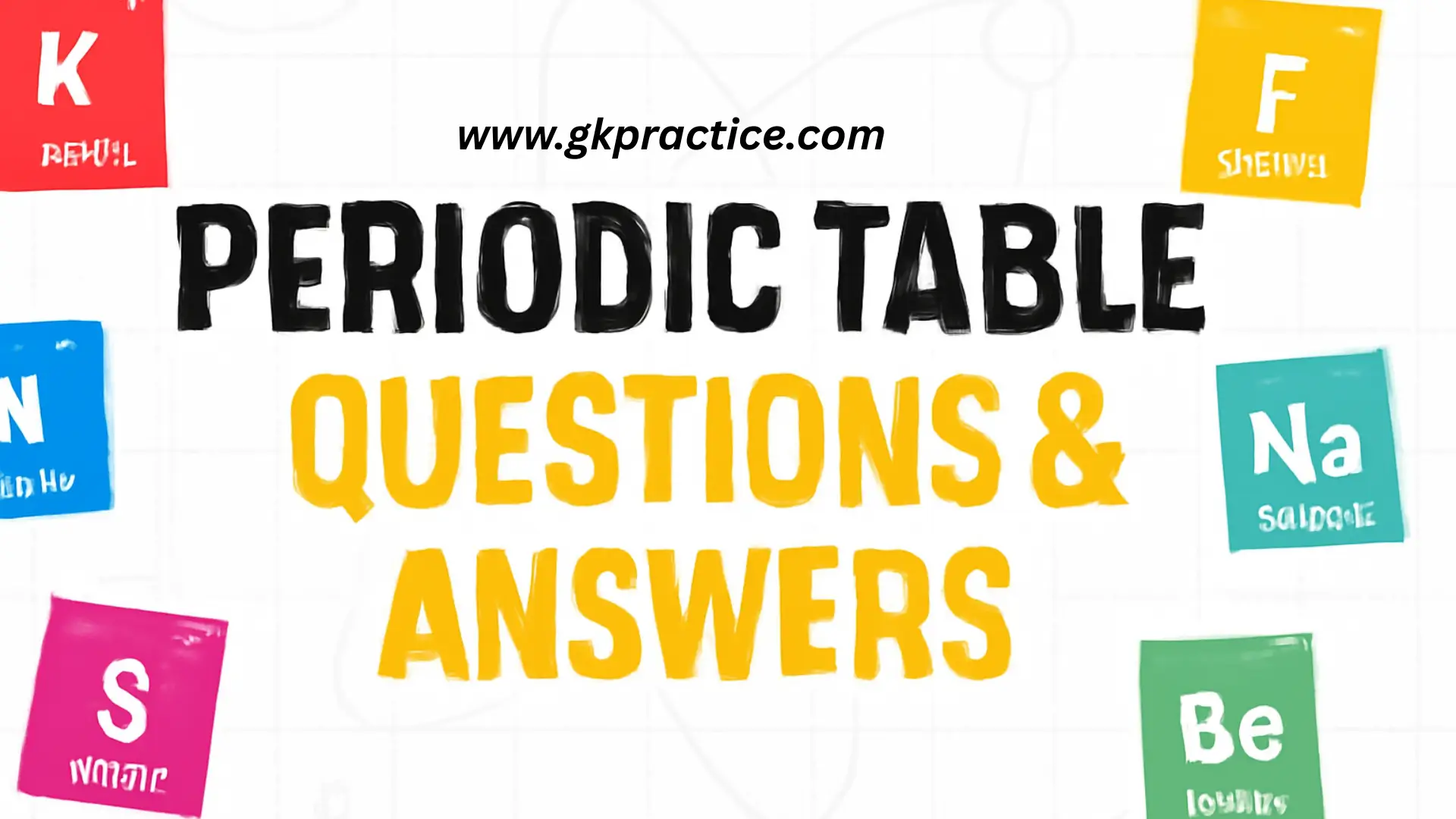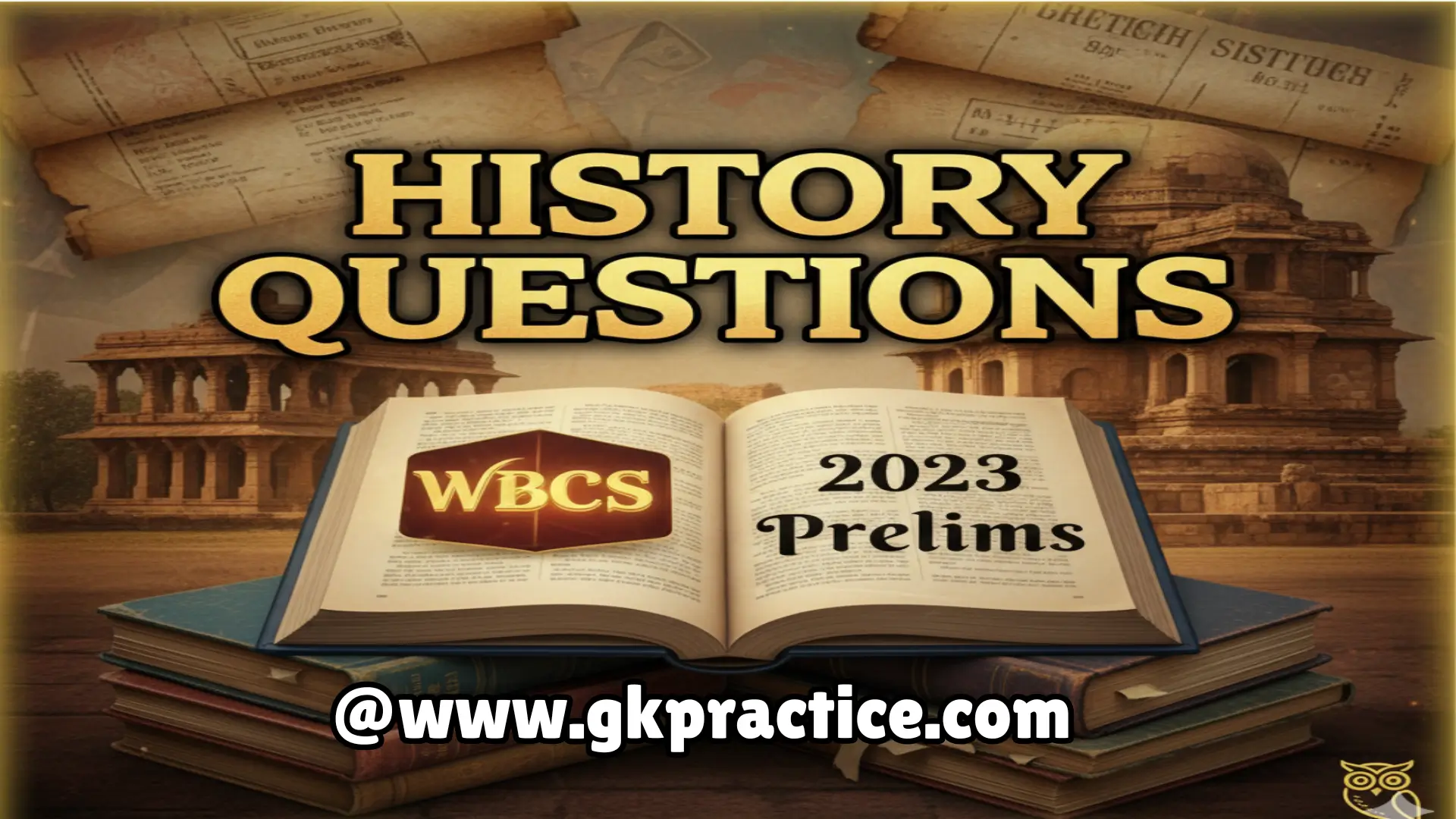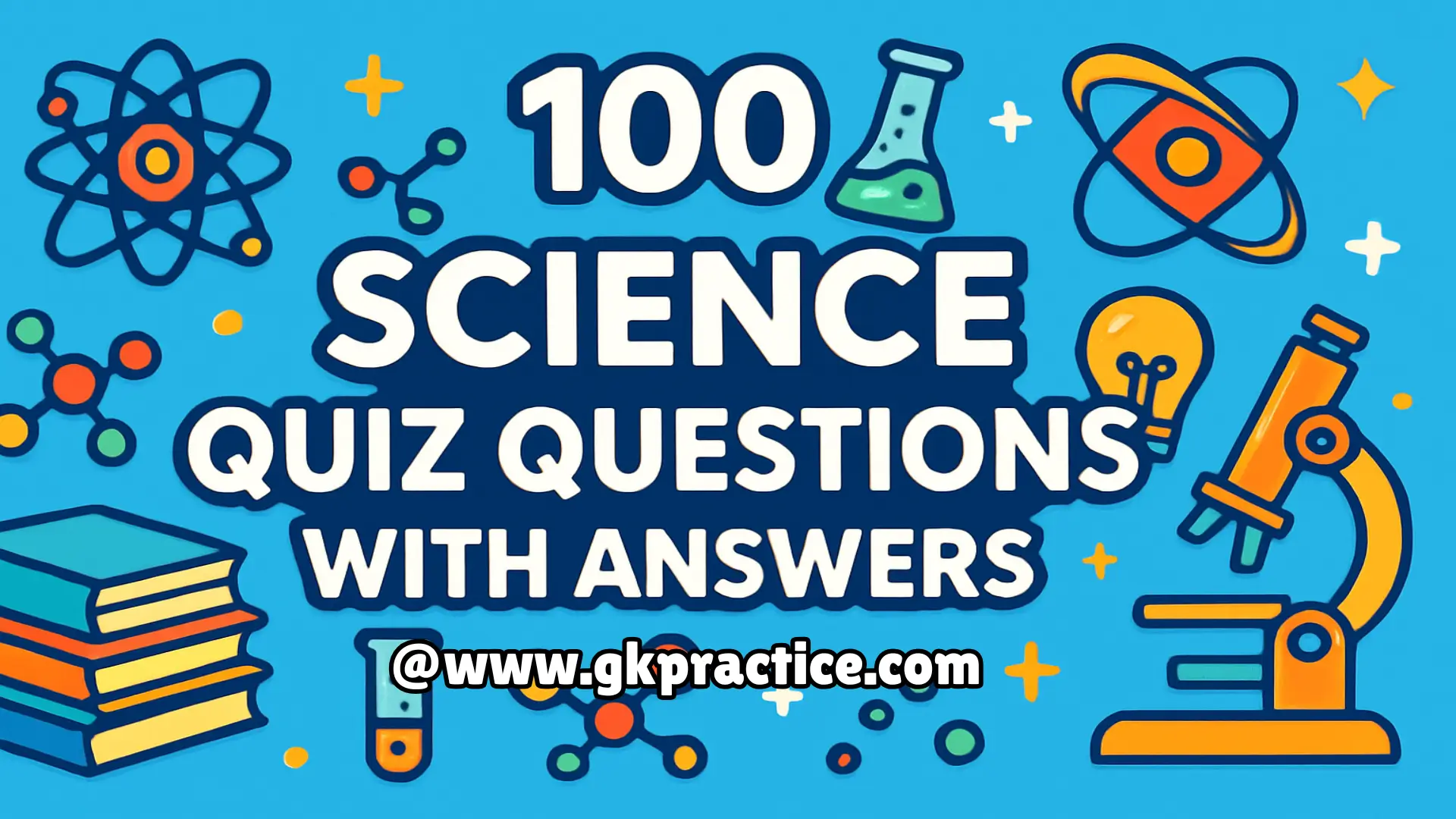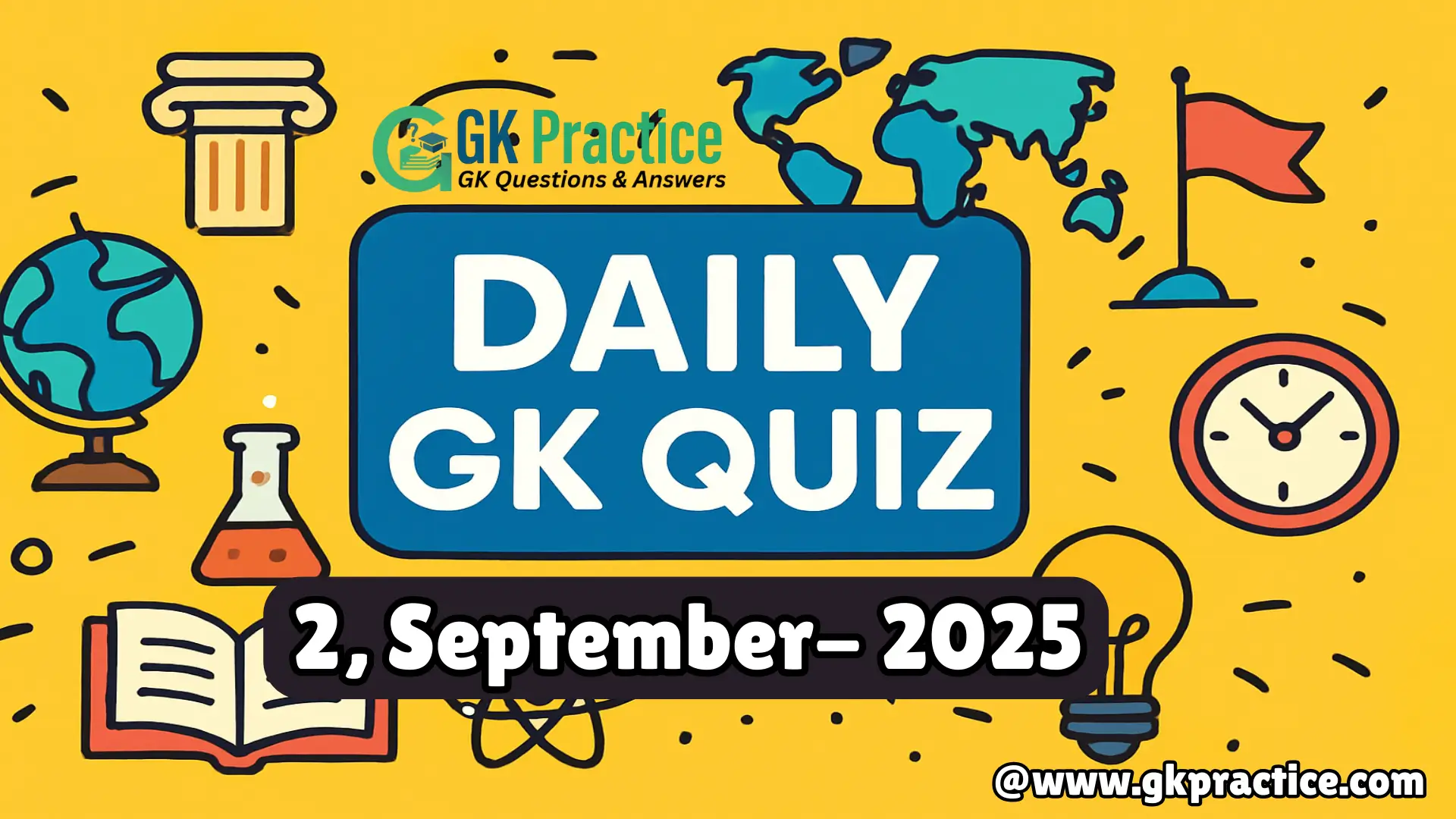This blog post covers 50 solved Periodic Table Questions & Answers designed for exam preparation. Each question comes with multiple-choice options, correct answers, and a clear 40–50 word explanation. Perfect for competitive exam aspirants looking to strengthen their Chemistry General Knowledge, especially periodic table trends, elements, and properties.
Most Important Periodic Table Questions with Explanations:-
Q1. Who is considered the “Father of the Periodic Table”?
a) Henry Moseley
b) Dmitri Mendeleev
c) John Dalton
d) Antoine Lavoisier
Explanation: Dmitri Mendeleev is called the father of the periodic table because in 1869 he arranged elements by increasing atomic mass and left gaps for undiscovered ones. His table successfully predicted properties of future elements like gallium and germanium, proving the accuracy of his classification system.
Q2. The modern periodic table is arranged on the basis of:
a) Atomic mass
b) Atomic number
c) Neutron number
d) Valency
Explanation: The modern periodic table, proposed by Henry Moseley in 1913, is based on atomic number (number of protons). This solved inconsistencies in Mendeleev’s version. Atomic number increases from left to right, determining chemical properties by defining electronic configuration and periodic repetition of elements.
Q3. How many periods are present in the modern periodic table?
a) 7
b) 8
c) 9
d) 10
Explanation: The modern periodic table has 7 horizontal rows called periods. Each period represents elements with the same principal quantum number. Properties like atomic radius and ionization energy change across a period due to variation in effective nuclear charge.
Q4. Which group of the periodic table contains noble gases?
a) Group 16
b) Group 17
c) Group 18
d) Group 1
Explanation: Noble gases such as helium, neon, argon, krypton, xenon, and radon belong to Group 18. They are chemically inert because of their stable octet (or duplet in helium) electronic configuration. These gases show very low reactivity and are used in lighting and shielding applications.
Q5. Which element has the highest electronegativity?
a) Oxygen
b) Chlorine
c) Fluorine
d) Nitrogen
Explanation: Fluorine, located in Group 17, has the highest electronegativity (3.98 on Pauling scale). Its small atomic size and high effective nuclear charge attract electrons strongly. This makes fluorine highly reactive, forming compounds with almost all elements, including noble gases under special conditions.
Q6. Which element is placed in Group 1 but is not an alkali metal?
a) Lithium
b) Sodium
c) Potassium
d) Hydrogen
Explanation: Hydrogen is placed in Group 1 because it has one valence electron like alkali metals, but it is not a metal. It shows dual nature—behaves like alkali metals (forms H+) and halogens (forms H–). Hence, it’s a unique element with a special position.
Q7. Which period contains the maximum number of elements?
a) 2nd period
b) 3rd period
c) 4th period
d) 6th period
Explanation: The 6th period contains the maximum number of elements—32. This is because it includes lanthanides (14 elements) along with s, p, and d block elements. The addition of these inner transition elements extends the count, making it the longest period in the table.
Q8. Which of the following is a transition element?
a) Sodium
b) Calcium
c) Iron
d) Oxygen
Explanation: Transition elements belong to d-block (Groups 3–12). They have partially filled d-orbitals and show variable oxidation states. Iron (Fe) is a transition metal used in steel production, capable of forming compounds like Fe²⁺ and Fe³⁺, and also acts as a catalyst.
Q9. Which element is known as the lightest metal?
a) Sodium
b) Lithium
c) Magnesium
d) Aluminum
Explanation: Lithium, the first element in Group 1 (alkali metals), is the lightest metal with atomic number 3. It is soft, highly reactive, and used in rechargeable batteries. Due to its small size and high reactivity, it forms covalent compounds unlike other alkali metals.
Q10. Which of the following elements is a metalloid?
a) Boron
b) Neon
c) Calcium
d) Sulphur
Explanation: Boron is classified as a metalloid, showing properties of both metals and non-metals. It is hard, brittle, and a poor conductor, but forms alloys and compounds similar to metals. Metalloids like boron, silicon, and arsenic are important in electronics and glass industries.
We hope this collection of Periodic Table Questions & Answers helps you in your competitive exam preparation. Practicing these periodic table MCQs will not only strengthen your Chemistry basics but also improve your chances of scoring well in GK and science sections. Keep learning, keep practicing!
* For more GK Questions and Exam Preparation Content, follow and subscribe to our YouTube Channel :GK Practice- Subscribe Now
Explore More:
If you found this set useful, don’t miss our other GK MCQ collections covering Freedom Struggle Personalities, Rulers of the Delhi Sultanate, First in Physics Inventions, and more. Click here to explore all GK question sets and boost your competitive exam preparation.







